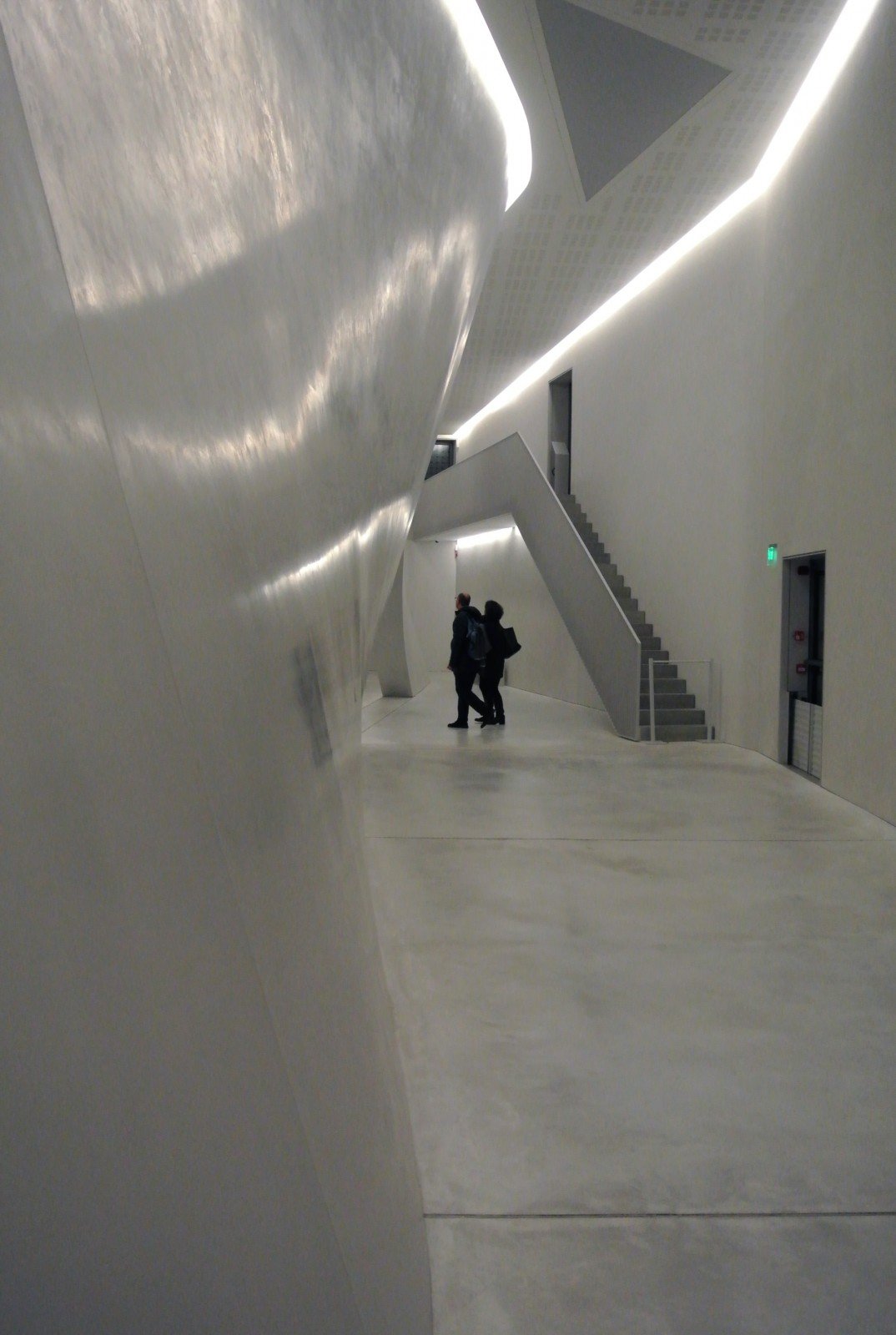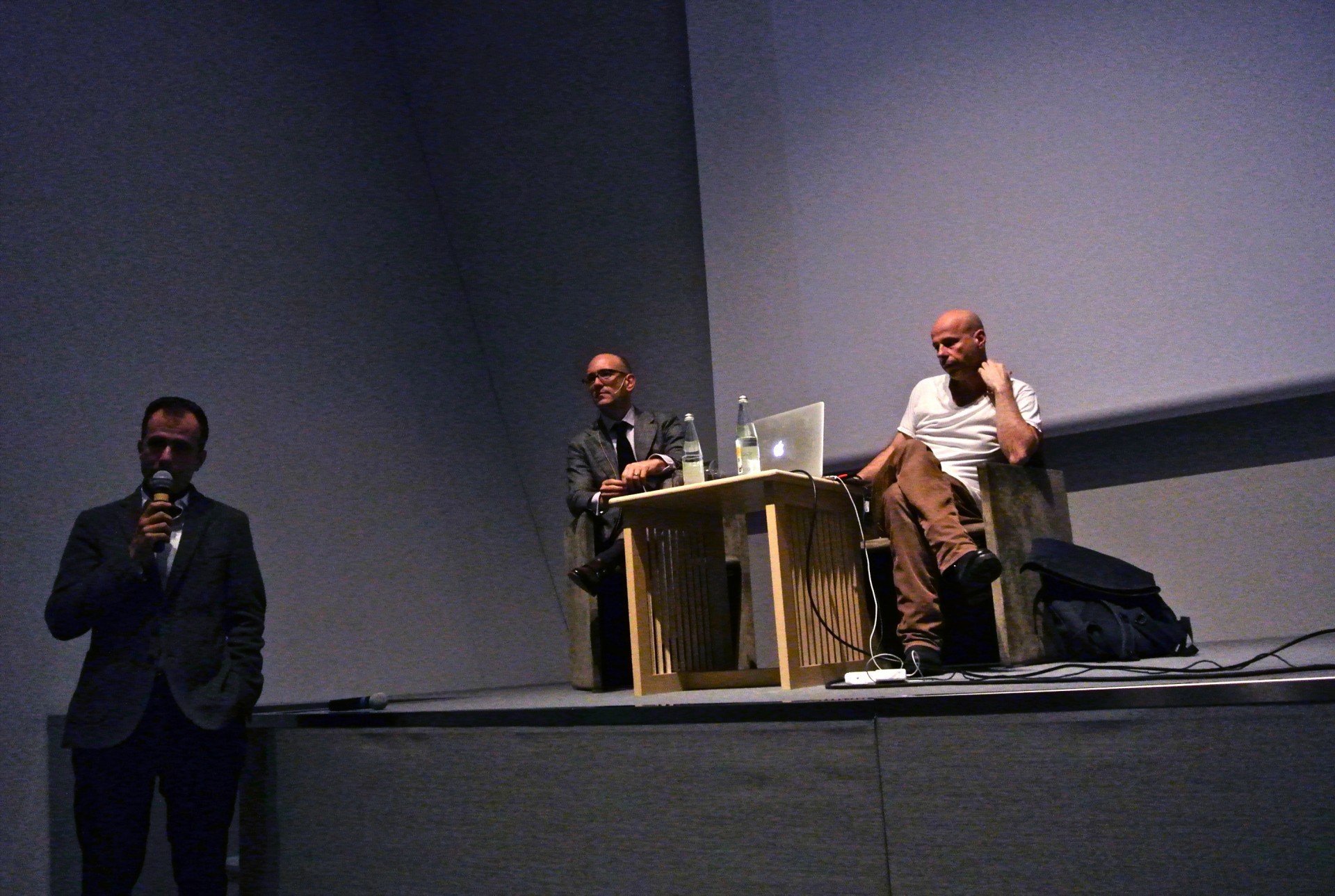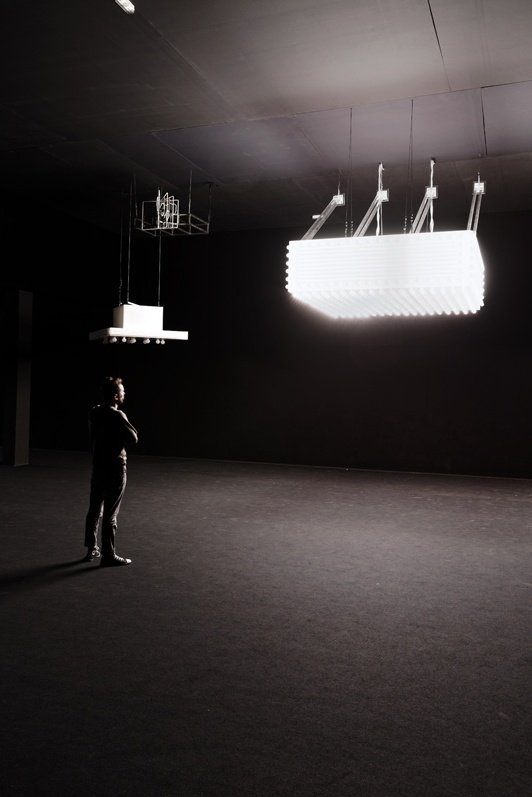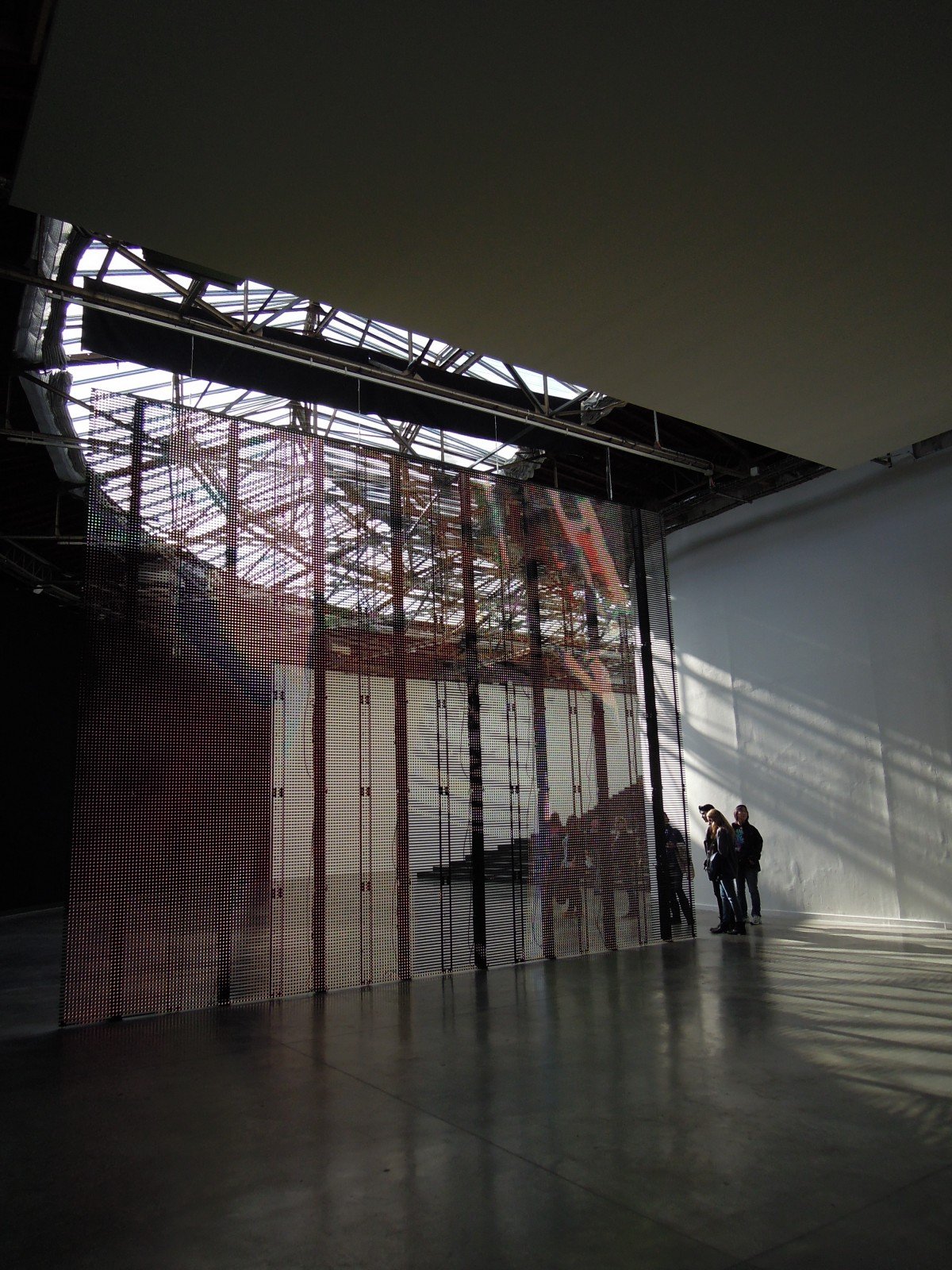At the Teatrino of Palazzo Grassi Philippe Parreno reveals his affinity with Philip K. Dick
- Teatrino of Palazzo Grassi, Venice.
- Philippe Parreno in conversation with Carlos Basualdo at the Teatrino of Palazzo Grassi, Venice.
- Philippe Parreno, exhibition view at the Palais de Tokyo, 2013.
- Philippe Parreno, Tv Channel, 2013 (detail)
From our perspective, the essence of the conversation between artist Philippe Parreno and curatorCarlos Basualdo put up last Thursday at the Teatrino of Palazzo Grassi in Venice – we warmly recommend this art conversation program, out of doubt the best one in Italy at the moment – lies in the video the artist surprisingly used to introduce himself: a speech given in 1977 by Philip K. Dick at the Metz SCI-FI Convention, France. The problems we had pointed out when we visited Parreno’s epic retrospective at the Palais de Tokyo in Paris seem to have eventually found a valid solution.
Introducing his speech, that asserts the real existence of the parallel worlds described in his novels, Dick claims: «it concerns a topic which has been discovered recently and which may not exist at all. I may be talking about something that does not exist, therefore I am free to say everything or nothing». Those who have visited the Parreno’s retrospective – titled “Anywhere, anywhere, out of the world” – will immediately find in Dick’s statement an important key for a better understanding of the role played by the “absence” in Parreno’s entire body of works. From the idea of “dispersion” represented by the Palais de Tokyo’s blurred windows and lamps, to the sound driven environments, or to the “scattered obsession” of the multi-screen video portrait of Zidane: if absence is the first condition for a parallel reality to actually exist, then the material and the immaterial have the same relevance. Hence, information which is the substance of the immaterial, becomes as important as the material itself.
Moreover, critics have always appreciated the way Dick puts his writings in a kind of programmed continuity, moving ideas from one novel to another in order to create a unique corpus. In his speech the novelist mentions also this aspect. Therefore it’s extremely meaningful that Parreno declared to share the same methodology. From this point of view, the 3D model of the Parisian exhibition’s display shown by Parreno in Venice casts additional light on this “structural” continuity between his artworks (it may even be considered an artwork in itself). Thus, architecture, and space,were not the occasioning drivers of the exhibition. Thanks to the parallel with Dick, now this “continuity” turns out to be a fundamental strategic creative “tool” of the artist’s art practice.
Dick makes also an interesting reference to memory, and this is probably the crucial point of the mature poetic universe of Parreno. In effect, memory represents for the novelist the source of his information system, but a mysterious kind of source, which is triggered by dreams. It is indeed the dreamlike element that linked the Parisian Parreno’s retrospective and the Pierre Huyghe’s one at the Centre Pompidou to the simultaneous show dedicated to the perception of dreams during the Renaissance (Musee du Luxembourg). Probably it had not been a coincidence that, just a few months before these three shows took place, Surrealism was celebrated by the ultimate exhibition dedicated to Salvador Dalí at the Centre Pompidou.
To conclude, we would like to draw your attention to a further concept that Parreno discussed at the Teatrino. With regards to the big video screen on show at the Palais de Tokyo (TV Channel 2012), the artist asserted that “the information decreases as you get closer to the screen”. That is to say, from the right distance you are able to decode the image, but the more you walk towards the “source”, the more you tend to lose it, thus noticing only the device. While moving towards it, that is a real object, you unconsciously switch from the second dimension to the third one. Hence, it is through this action of moving that we, viewers, create the dimensions that we need to organize our perception of the whole. This is a theoretical assumption.
July 18, 2015




